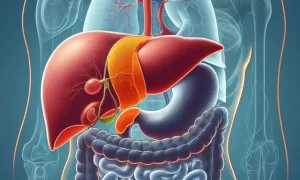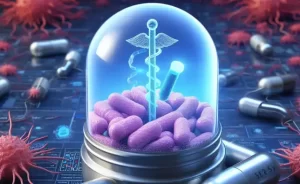Scientists find microplastics in snow samples from Antarctica for the first time
- Normal Liver Cells Found to Promote Cancer Metastasis to the Liver
- Nearly 80% Complete Remission: Breakthrough in ADC Anti-Tumor Treatment
- Vaccination Against Common Diseases May Prevent Dementia!
- New Alzheimer’s Disease (AD) Diagnosis and Staging Criteria
- Breakthrough in Alzheimer’s Disease: New Nasal Spray Halts Cognitive Decline by Targeting Toxic Protein
- Can the Tap Water at the Paris Olympics be Drunk Directly?
Scientists find microplastics in snow samples from Antarctica for the first time
- Should China be held legally responsible for the US’s $18 trillion COVID losses?
- CT Radiation Exposure Linked to Blood Cancer in Children and Adolescents
- FDA has mandated a top-level black box warning for all marketed CAR-T therapies
- Can people with high blood pressure eat peanuts?
- What is the difference between dopamine and dobutamine?
- How long can the patient live after heart stent surgery?
Scientists find microplastics in snow samples from Antarctica for the first time.
For the first time ever, scientists have found microplastics in snow samples from Antarctica , according to a study published Tuesday, CNET reported .
The discovery could mean that microplastics formed when plastics degrade are causing ecological damage to the marine environment, climate and organisms.

Until now, data from Antarctic snow was largely absent, although microplastics had been found in deep-sea sediments, marine sediments, oceans and surface waters in the region.
“The impact of microplastics reaching remote areas like Antarctica is enormous,” said the study, published in The Cryosphere , a journal of the European Geosciences Union . “Antarctic organisms have adapted to extreme environmental conditions over millions of years, and rapid environmental change…is threatening unique ecosystems.”
The researchers collected 19 samples from across Ross Island, Antarctica, between November 30 and December 2, 2019.
Six were from locations near the research station, and 13 were from “remote locations with minimal human interference.” Suspected microplastics were chemically identified at a laboratory in New Zealand.
The researchers found microplastics in all samples, with a total of 109 particles identified in 19 field samples.

“When microplastics are present on snow and ice in high mountains or polar regions, it may accelerate cryosphere melting,” the study said. “Microplastics may further influence climate by acting as cloud ice cores in the atmosphere.”
The authors note that the ingestion of microplastics by Antarctic krill may also negatively impact “the entire Antarctic food chain.”
Higher polar predators including gentoo, Adélie, chinstrap and emperor penguins have also been found to have microplastics in their diets. The effects of pollution also put emperor penguins at risk, with “current models predicting an 81% decline in emperor penguin populations by 2100”.
For most samples, the most likely short-term source of microplastics was northerly winds blowing over the local base. But for sites where the wind’s trajectory did not pass any artificial stations, the likely reason was that microplastics were blown into the snow from the nearby sea.
“Critically, the average concentrations of microplastics found in this study were higher than those reported in the surrounding Ross Sea and East Antarctic sea ice,” the study said.
Scientists find microplastics in snow samples from Antarctica for the first time.
(source:internet, reference only)
Disclaimer of medicaltrend.org
Important Note: The information provided is for informational purposes only and should not be considered as medical advice.



